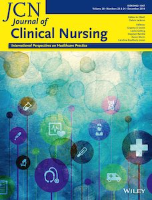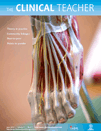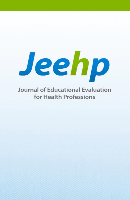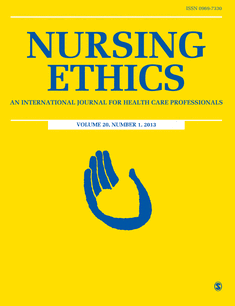
Clinical Simulation in Nursing
Scope & Guideline
Bridging gaps in nursing education with impactful insights.
Introduction
Aims and Scopes
- Simulation-Based Learning:
Focuses on various simulation methodologies, including high-fidelity, low-fidelity, and virtual simulations, to prepare nursing students for real-life clinical scenarios. - Interprofessional Education:
Promotes collaborative learning experiences among nursing and other health professions, fostering teamwork and communication skills essential for patient care. - Psychometric Evaluation:
Involves assessing the effectiveness of simulation tools and educational strategies through robust psychometric testing and evaluation methodologies. - Cultural Competence and Sensitivity:
Addresses the need for culturally sensitive care in nursing education by incorporating diversity, equity, and inclusion themes into simulation scenarios. - Technology Integration:
Explores the use of advanced technologies, such as virtual reality, augmented reality, and artificial intelligence, to enhance the realism and effectiveness of simulation training. - Debriefing and Reflection:
Focuses on the importance of effective debriefing practices post-simulation to enhance learning outcomes and foster critical thinking among students. - Clinical Judgment and Decision-Making:
Investigates how simulation can improve clinical reasoning and decision-making skills, crucial for nursing practice.
Trending and Emerging
- Virtual and Augmented Reality Simulations:
There is a rising trend in the use of virtual and augmented reality technologies in simulation, providing immersive learning experiences that enhance student engagement and clinical skills. - Mental Health and Emotional Competence:
An increased focus on mental health simulations and emotional competence training underscores the importance of addressing psychological aspects of patient care. - Interprofessional Collaboration:
The integration of interprofessional education in simulation scenarios is gaining momentum, emphasizing teamwork and communication across various health disciplines. - Simulation for Cultural Competence:
Emerging themes include the use of simulation to teach cultural humility and sensitivity, preparing nursing students to care for diverse populations effectively. - Use of Artificial Intelligence:
The exploration of AI-driven simulation tools is becoming more prevalent, offering personalized learning experiences and real-time feedback during training. - Focus on Psychological Safety:
A growing emphasis on creating psychologically safe learning environments during simulations has emerged, highlighting the importance of student well-being and open communication. - Debriefing Innovations:
Innovative approaches to debriefing, including asynchronous and peer-led models, are being explored to enhance reflection and learning outcomes post-simulation.
Declining or Waning
- Traditional Assessment Methods:
There is a noticeable decrease in studies focused on traditional assessment techniques, such as written exams, as simulation-based assessments gain prominence. - Static Simulation Techniques:
The focus on static or non-interactive simulation methods is waning, with a shift towards more dynamic, immersive experiences that engage learners actively. - Basic Skills Training:
Interest in basic skills training through simulation appears to be declining as the emphasis shifts towards complex, scenario-based learning that better reflects real-world nursing challenges. - Single-Discipline Focus:
Research centered solely on nursing without interprofessional collaboration is becoming less common, as the field increasingly values multidisciplinary approaches. - In-Person Simulation Exclusivity:
The reliance on in-person simulation experiences is diminishing, with a growing acceptance and integration of virtual and hybrid simulation models.
Similar Journals

Nursing Open
Connecting practitioners and researchers for better care.Nursing Open is a premier open access journal published by WILEY, dedicated to advancing the field of nursing and healthcare research. With its ISSN 2054-1058, this journal has been at the forefront of disseminating innovative and impactful research since its inception in 2014. As an open access platform, it ensures that knowledge is accessible to all, promoting collaboration and engagement among researchers, practitioners, and students. Hailing from the United States and located at 111 River St, Hoboken, NJ 07030, Nursing Open has established itself as a vital resource in the nursing discipline, reflected in its impressive Q1 ranking in the 2023 category of Nursing (miscellaneous) and Scopus ranking of #36 out of 139 in General Nursing, placing it in the 74th percentile. With a commitment to high-quality research and a focus on contemporary issues in nursing, this journal invites contributions that foster evidence-based practice and enrich the global nursing community.

International Journal of Nursing Knowledge
Transforming knowledge into exceptional patient care.The International Journal of Nursing Knowledge, published by WILEY, stands as a leading platform for advancing nursing scholarship, offering critical insights in both fundamentals and innovative research within the nursing field. With an ISSN of 2047-3087 and an E-ISSN of 2047-3095, this journal has garnered an impressive reputation, frequently ranking in the Q1 and Q2 quartiles across pivotal areas such as Fundamentals and Skills, and Research and Theory, respectively. Notably, it holds a Scopus rank of #5 in Nursing Fundamentals and Skills and #8 in Nursing Research and Theory, reflecting its high impact and relevance in shaping nursing education and practice. Since its inception in 2012, the journal has been devoted to fostering scholarly communication and knowledge across the nursing discipline, complementing both research and practical know-how. The journal is also aligned with open access principles, ensuring that cutting-edge nursing knowledge is accessible to a broad audience. With a commitment to rigor and excellence, the International Journal of Nursing Knowledge serves as an essential resource for nursing professionals, researchers, and students alike, dedicated to enhancing patient care through evidence-based practice.

International Journal of Nursing Sciences
Shaping the Future of Healthcare Through ResearchThe International Journal of Nursing Sciences, published by Elsevier since 2014, stands as a leading open access platform in the nursing field, notably categorized in the Q1 quartile for Nursing (Miscellaneous) in 2023, which reflects its exceptional quality and impact. With an impressive Scopus rank of #11 out of 139 in General Nursing, this journal is vital for researchers, professionals, and students eager to explore innovative nursing practices and scientific advancements. Its commitment to disseminating high-quality research fosters knowledge sharing and collaboration, making it an indispensable resource for those dedicated to improving healthcare outcomes. Based in China, the journal aims to bridge gaps in nursing science globally, ensuring comprehensive access to critical studies and reviews that shape the future of nursing. Access options allow for unrestricted reading and sharing of research articles, emphasizing the journal's dedication to advancing nursing leadership and education worldwide.

JOURNAL OF CLINICAL NURSING
Advancing clinical excellence through rigorous research.The JOURNAL OF CLINICAL NURSING, published by WILEY, stands as a prestigious platform within the realm of nursing and medical research in the United Kingdom. With an ISSN of 0962-1067 and an E-ISSN of 1365-2702, this journal has been a cornerstone of scholarly communication since its inception in 1992. Spanning a comprehensive scope of clinical nursing practices and innovations, it consistently ranks in the first quartile (Q1) according to the latest metrics in both the disciplines of nursing and general medicine. The journal holds a commendable Scopus ranking of 8th out of 139 journals in General Nursing, placing it within the 94th percentile, which underscores its importance and influence in the academic community. Although it does not currently offer Open Access options, the JOURNAL OF CLINICAL NURSING provides an invaluable resource for researchers, healthcare professionals, and students, aiming to enhance clinical practices and address contemporary challenges within the field of nursing.

Nurse Educator
Inspiring the Future of Nursing Education and Practice.Nurse Educator, published by Lippincott Williams & Wilkins, serves as a pivotal resource in the field of nursing education and practice. With an ISSN of 0363-3624 and an E-ISSN of 1538-9855, this esteemed journal has been contributing to the development of nursing professionals since 1976 and is recognized for its impactful articles, reflected in its 2023 Q2 category rankings across various nursing and educational domains. Nestled within the competitive landscape of academic publishing in the United States, its substantial Scopus ranking underscores its significance, particularly in Nursing Fundamentals and Skills (Rank #7/15) and general nursing fields (Rank #52/139). The journal's scope encompasses essential topics pertinent to nurse educators, including pedagogy, clinical practice, and exam preparation strategies, ultimately aiming to enhance nursing education and improve patient care outcomes. By providing an engaging platform for innovative research and best practices, Nurse Educator stands as an essential resource for researchers, educators, and students committed to advancing the nursing profession.

Clinical Teacher
Advancing Skills for Healthcare EducatorsThe Clinical Teacher is a leading journal published by WILEY, dedicated to fostering excellence in medical education and enhancing the skills of healthcare educators. With an ISSN of 1743-4971 and an E-ISSN of 1743-498X, this esteemed publication has gained recognition for its practical insights and innovative approaches, particularly in the realms of Teaching and Assessment within the medical field. Since its inception in 2006, it has maintained a notable impact within its categories, ranking Q3 in Medicine (miscellaneous) and an impressive Q1 in Review and Exam Preparation as of 2023. The journal's commitment to advancing educational practices is reflected in its exceptional Scopus ranking of #1 in the Nursing Review and Exam Preparation category, placing it in the 87th percentile of its peers. Although not open access, The Clinical Teacher serves as an invaluable resource for researchers, educators, and healthcare professionals focused on improving the learning experiences of future medical practitioners. With continued contributions from eminent figures in the field, this journal stands as a vital platform for the dissemination of knowledge and the evolution of teaching methodologies in clinical settings.

NURSE PRACTITIONER
Elevating Nursing Standards through Scholarly ResearchNURSE PRACTITIONER, published by Lippincott Williams & Wilkins, is a premier journal dedicated to advancing the field of nursing and health care practice. Since its inception in 1975, this journal has provided a vital platform for the dissemination of research, clinical insights, and interdisciplinary scholarship, bridging gaps in nursing education and practice. With an impact factor reflective of its focus on evidence-based practice, NURSE PRACTITIONER is positioned in the Q3 category of Nursing (miscellaneous) and Q4 in Medicine (miscellaneous) for 2023, indicating its growing relevance in the academic community. Each issue features a range of articles from original research to review papers, designed to empower nurse practitioners and enrich educational methods. Although it does not currently offer open access, the journal remains a critical resource for professionals seeking to stay informed on innovative practices and the latest advancements in the field, making it indispensable for researchers, practitioners, and students alike. For more information, visit the publisher's website at Two Commerce Sq, 2001 Market St, Philadelphia, PA 19103.

Japan Journal of Nursing Science
Innovating Practices, Elevating Patient CareJapan Journal of Nursing Science, published by WILEY, serves as a pivotal resource in the field of nursing, focusing on innovative research and theoretical developments that enhance nursing science practices. With an ISSN of 1742-7932, this journal has established itself as a reputable platform, reflected in its 2023 rankings, which place it in the Q2 category for both Medicine (miscellaneous) and Research and Theory. Covering a broad range of topics crucial to the advancement of nursing, the journal provides researchers, professionals, and students access to high-quality studies, methodologies, and discussions that shape contemporary nursing practices and policies. Though not an Open Access journal, it contributes significantly to the academic discourse and research community, with emphasis on fostering evidence-based practices and promoting excellence in nursing education and healthcare delivery. With a cumulative publishing history from 2006 to the present, the Japan Journal of Nursing Science is committed to disseminating vital knowledge that enriches the nursing profession and improves patient care.

Journal of Educational Evaluation for Health Professions
Connecting research and practice in health education.The Journal of Educational Evaluation for Health Professions is a premier Open Access journal that has been dedicated to advancing the field of educational evaluation in health professions since its inception in 2004. Published by the Korea Health Personnel Licensing Examination Institute and based in South Korea, this journal holds prestigious positions in the academic community with a remarkable Q1 ranking in both Education and Health Professions (miscellaneous) categories as of 2023. It specifically serves as a vital platform for researchers, professionals, and students engaged in the assessment and enhancement of educational practices in health care training. The journal is indexed in Scopus with impressive rankings, including the top percentile in Health Professions and Education, underscoring its influence and reach within these critical fields. This journal not only shares innovative research but also aims to foster collaboration and dialogue among educators and policymakers to improve health care education globally.

NURSING ETHICS
Examining the Intersection of Ethics and CareNURSING ETHICS, published by SAGE PUBLICATIONS LTD, is a premier international journal dedicated to the exploration and examination of ethical issues within the field of nursing. Since its inception in 1994, the journal has consistently provided a critical platform for scholars and practitioners to discuss ethical dilemmas and address complex legal aspects affecting nursing practice. With a remarkable Q1 ranking in the categories of Issues, Ethics, and Legal Aspects, it ranks in the top percentile, boasting a 92nd percentile position among its peers. Although currently not an Open Access journal, NURSING ETHICS plays a crucial role in fostering dialogue and advancing knowledge in the rapidly evolving landscape of nursing ethics, making it an invaluable resource for researchers, professionals, and students alike. The journal's commitment to high-quality research ensures that vital ethical considerations remain at the forefront of nursing education and practice, reinforcing its significance in a field that is continually impacted by ethical challenges.